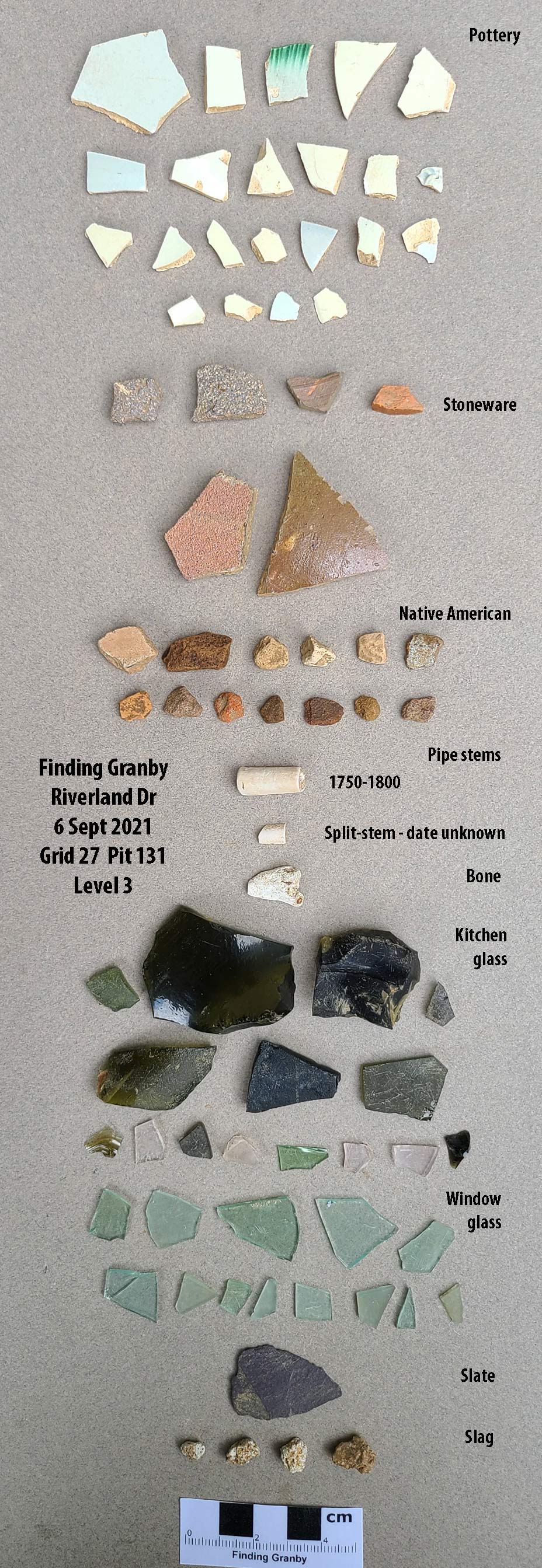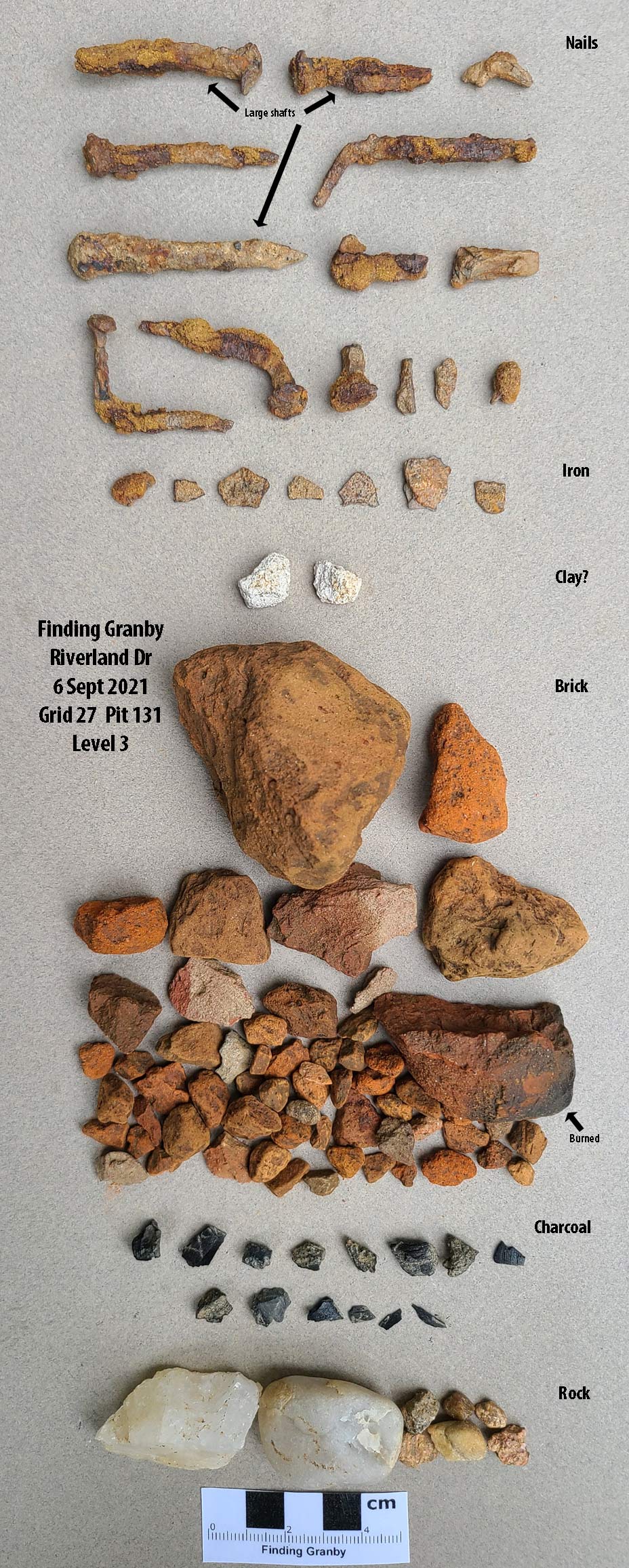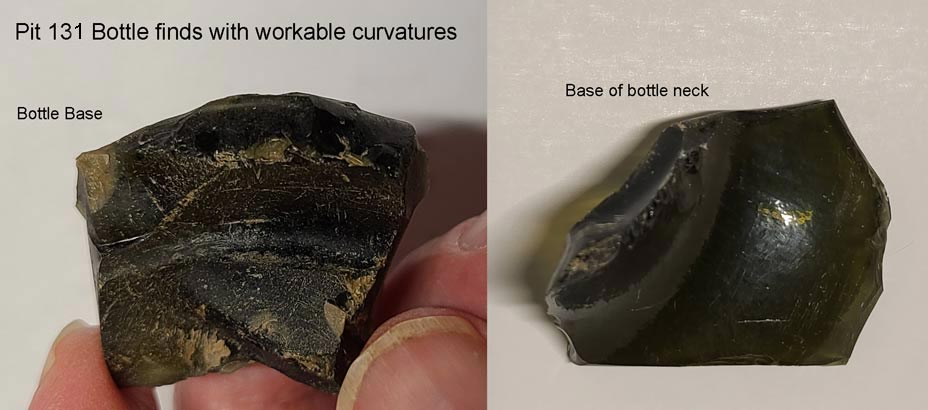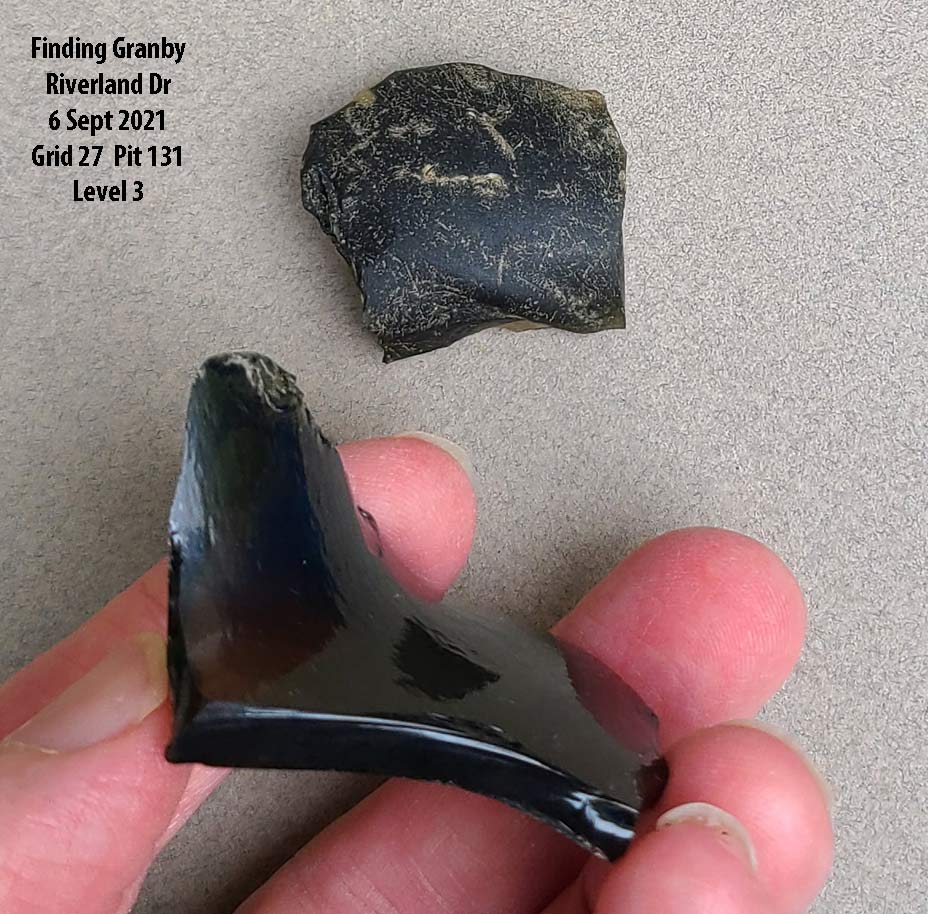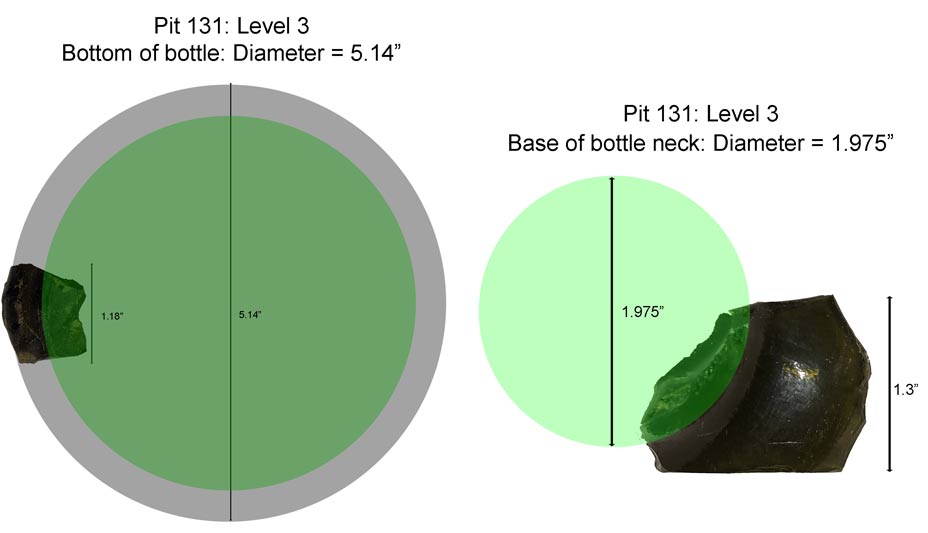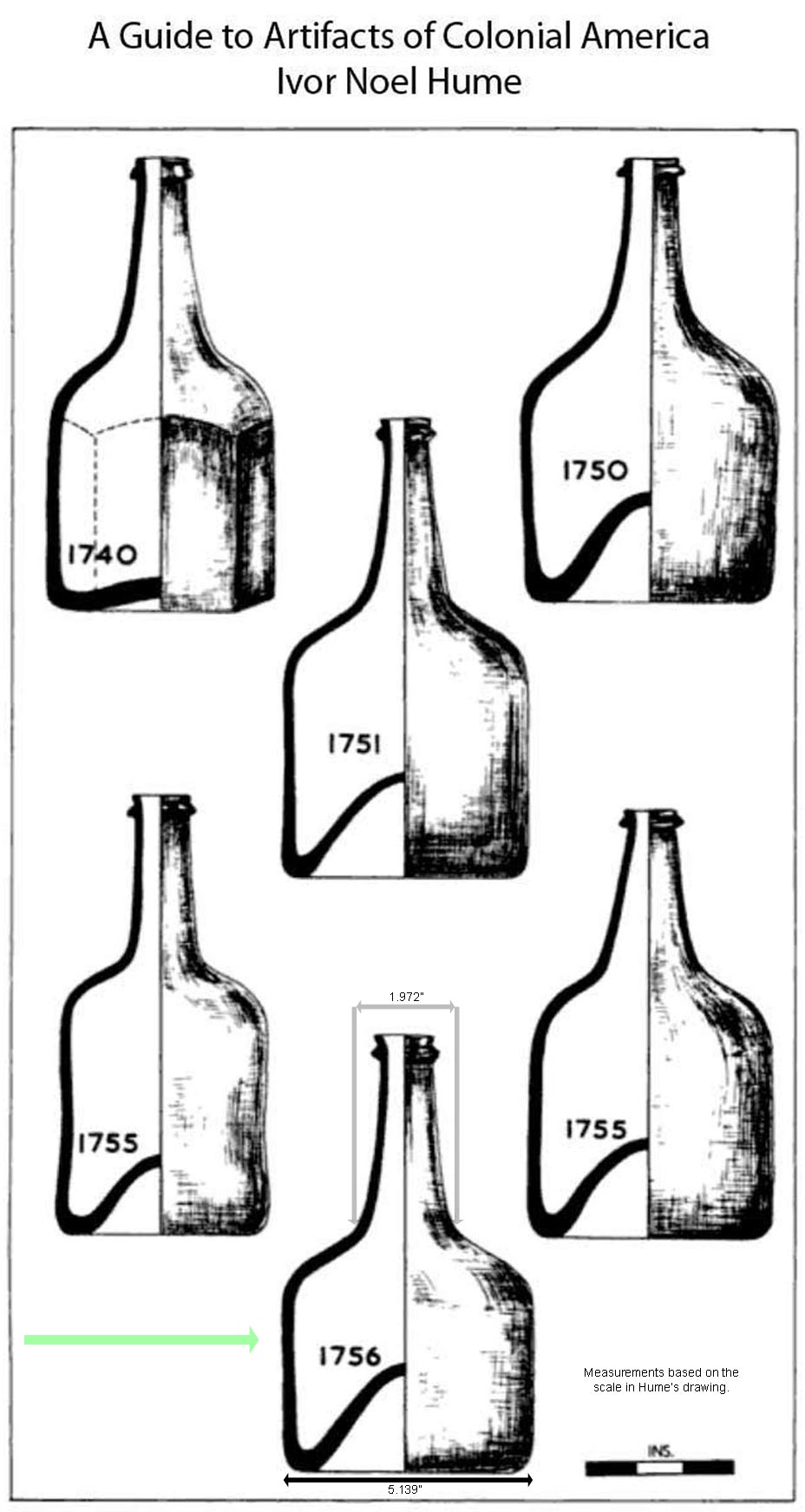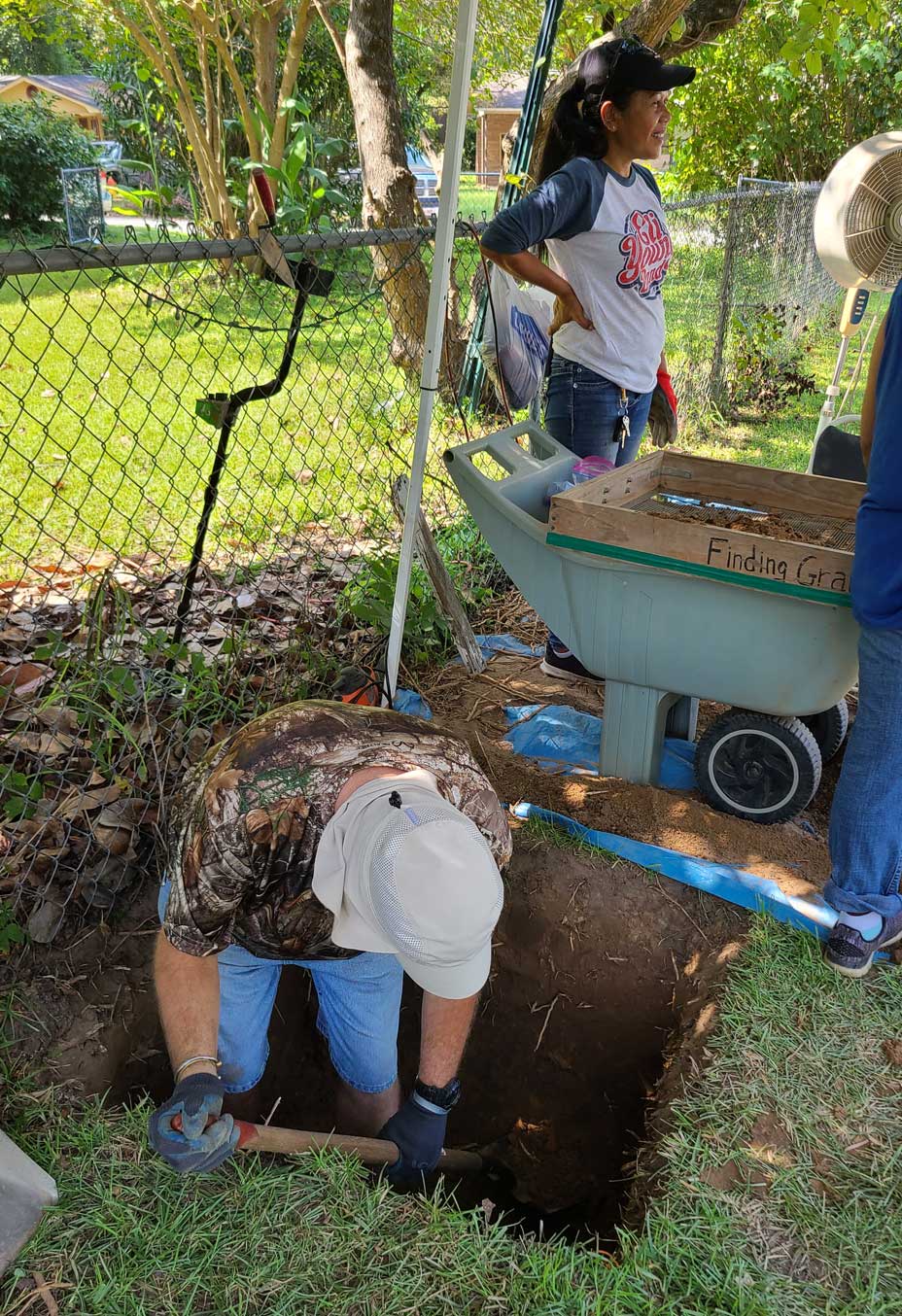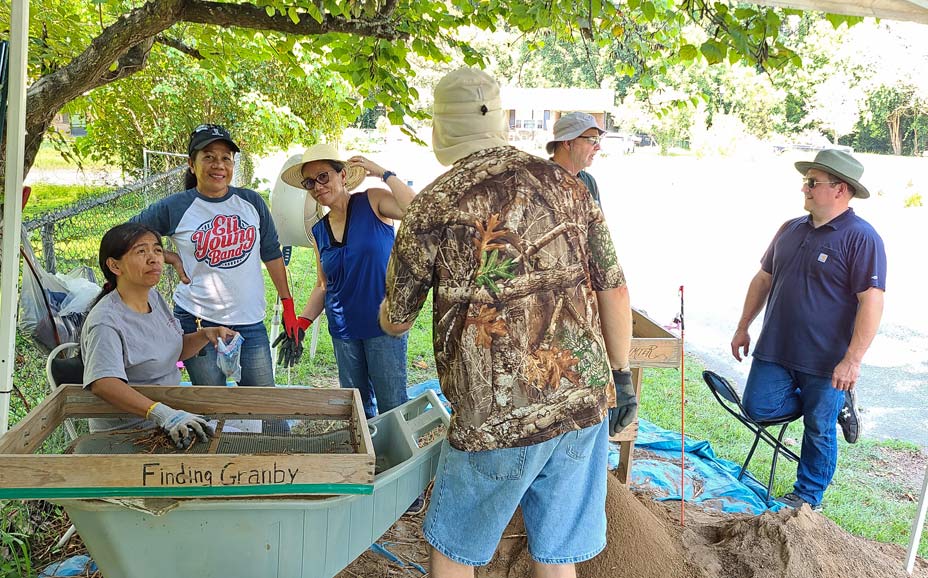Pit 131: Level 3
Completed by Steve Coker, Bill Benton, Art Coogler, Josephine Bachman, Jocelyn and DC Locke, Odess and David Brinkman. Once again, the level two "dead zone" turned to gold in level three as we began getting artifacts from all the major categories. As expected in this area, we continued to see stoneware and Native American pottery pieces. Odess found a rare Granby pipe stem (dated 1750-1800). Most (80%) of the pipe stems we find are from the 1720 to 1750 period which would be pre-Granby and either Thomas Brown or Fort Congaree II related. Jocelyn then found a bottom piece (only a little over one-inch square) of a green wine/beer bottle. It had a very rough texture which we have found to be pre-Granby. After cleaning the item, we found it had the distinctive circumference line of the bottle, and it was enough to determine the diameter of the bottle. For the second time (also found in pit 119), we had found a greater-than 5 inch diameter bottle bottom which narrows the date down to 1750-1756. This is very important because it is post Thomas Brown and pre-Granby, which means it must be related to Fort Congaree II. Remember that it was the Granby dig team that found Fort Congaree II in 2014, just 1000 feet south of the Granby dig site. So, just what was happening here between 1750 and 1756?
Fort Congaree II was built in 1748 and was in full operation by 1750.
From Dr. Dan Tortora's research and paper on Fort Congaree II:
In 1752, Robert Steill, a storekeeper on the main road from the northern colonies across the Congaree River from Saxe Gotha started a ferry service "to the Landing near the Congaree Fort."
In May 1754 Governor Glen granted Martin Friday a license and a monopoly on the public ferry. By 1754, a new road opened from Augusta to Saxe Gotha Town, and the Fort featured prominently in the increased river traffic and settlement to the town.
On July 3, 1754, Nine hundred French soldiers surrounded the three hundred Virginian militiamen and South Carolina Independents at Fort Necessity. Fort Congaree II Commander Peter Mercier and six of his men came to help the young George Washington at Fort Necessity. They gave their lives saving Washington.
Life at the fort resembled life in other garrisons throughout the British Empire. A drummer was stationed at the fort until the Commons House paid and discharged him on April 2, 1756.
The Decline of Fort Congaree II: In 1758 and 1759 Cherokee warriors and European settlers clashed on the southern frontiers. Diplomacy failed, and South Carolina declared war on the Cherokee Indians. The Congarees (the Fort area) hosted British and Provincial soldiers on three separate military expeditions against the Cherokee. Governor Lyttelton visited the Congarees with 1,100 Provincials in 1759.
In 1761, Colonel James Grant led 2,900 British Regulars and South Carolina Provincials, including Francis Marion, John and William Moultrie, Isaac Huger, and Andrew Pickens - against the Cherokee Indians. These men trained and camped at and around the area of Fort Congaree II.
After this 1750-1756 bottle find, David found an obvious green bottle piece from the shoulder of a bottle. A diameter measurement/calculation was also done on it matched that of a 1756 bottom (that had a +5 inch bottom like what Jocelyn found), but this is fairly common in the bottles from all three of our time periods. More importantly, the glass was of a much higher quality which we have found to be more in the 1800-1810 time period. So, once again, we have glass items in level three that are Granby and others that pre-Granby. The other unique item found was several nails that had an unusually thick shaft which we had not noticed before. Another thing about pit 131 that is not unique but rare is that we continued to find artifacts down to 80cm. Normally 50cm is the maximum depth. This may have been partly because of the addition of dirt from the 1960 road construction that led to many of the artifacts in level one. Another tough job in this pit was digging through all the Magnolia roots, which were running horizontal and vertical. In fact, we still had roots coming up (vertically) at 80cm. Although difficult, it was a good Labor Day dig, and we went inside to take a break before filling the hole.
Pit 131: Level 3 produced: 22 kitchen pottery, 6 stoneware, 15 kitchen glass, 13 window glass, 14 nails, 13 Native American, 14 charcoal, 1 slate, 4 slag, 1 bone, and 3 iron pieces.
Out of all the pits in the Granby dig, this pit ranked: 51 out of 131.

